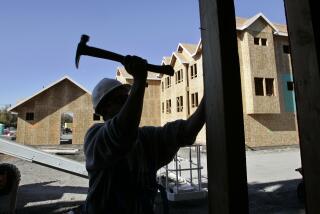California’s wealth pyramid
The most durable message from the Occupy Wall Street encampments across the nation is also the simplest: “We are the 99%.” But are the implications of that message fair? Is there a widening gap between rich and poor? Are those doing well just a fraction of the populace?
In the nation, and particularly in California, the answer is yes. We are living in an era of widening inequality, with income gains concentrated at the top, and most families in the state are falling behind.
New research from the California Budget Project examined data from the Franchise Tax Board and found that income gains during the last two decades were overwhelmingly concentrated among California’s wealthy. Between 1987 and 2009, more than one-third of the income gains went to just the top 1% of Californians, and almost three-quarters went to the top 10%. The bottom 90% received just over one-quarter of the growth in incomes.
There is a similar divide as to changes in annual income. During the last two decades, the average income for the top one-fifth of Californians jumped by more than 20%, after adjusting for inflation, while incomes declined for Californians in the bottom four-fifths of the income distribution, on average.
The report also found:
The top 1% have pulled far ahead of middle-income Californians. Over the last two decades, the average income of the top 1% of Californians increased by 50%, after adjusting for inflation, while the average income of the middle fifth fell by 15%. In 2009, the average income of the top 1% was $1.2 million — more than 30 times that of Californians in the middle fifth.
Higher incomes at the top contrast sharply with the more than 6 million Californians living in poverty. Nearly 1 in 6 Californians now lives in poverty, the largest share in over a decade. California’s millionaires, who account for a fraction of a percent of the population, had combined incomes of more than $100 billion in 2009 — 11 times the income needed to lift every Californian out of poverty.
California is home to some of the widest income gaps in the nation. At the state level, California has the seventh-widest income gap among the 50 states, ranking between Alabama and Texas. In addition, the income gaps in the Los Angeles and San Francisco metropolitan areas rank third and seventh, respectively, among large U.S. cities.
California’s income gap is larger than in most other states, but widening inequality here does reflect a national trend. In 2007, the top 1% of U.S. households received one-quarter of total income, the highest level of income concentration in almost 80 years.
Income disparities cannot be dismissed as an inevitable byproduct of economic growth. To the contrary, the past generation represents a marked departure from earlier history. Between 1947 and 1973, the rising tide of national prosperity truly did lift all boats, with increases in average income being relatively even across all segments of the income distribution. Only since 1973 have income gains at the top outpaced those for the rest of the income distribution.
Nor can we take comfort in the belief that everyone has the same opportunity to ascend the income ladder. While the rags-to-riches tale is a cherished American tradition, research shows that one’s ability to move up depends largely on family background — particularly, whether one grows up in an upper-income household. A study from the Economic Mobility Project, an initiative of the Pew Charitable Trusts, found that the United States actually has less economic mobility than many other industrialized nations.
Over the upcoming months, state and federal policymakers will seek to address long-term budget shortfalls. In California, where the latest forecasts show the state facing a sizable shortfall in 2012, policymakers and stakeholder groups have begun crafting ballot measures aimed at generating new revenues, as well as confronting the possibility of more spending cutbacks. Policymakers should be mindful of the growing income divide and the millions of workers and families who have fallen behind. They should seek policies that protect those whose incomes have stagnated, while raising revenues from those who have benefited most from the public structures — education, infrastructure, and other services — that underpin economic growth. They should find ways to mitigate — and not make worse — the decades-long trend toward inequality.
Alissa Anderson is deputy director and Jean Ross is executive director of the nonpartisan California Budget Project.
More to Read
A cure for the common opinion
Get thought-provoking perspectives with our weekly newsletter.
You may occasionally receive promotional content from the Los Angeles Times.










